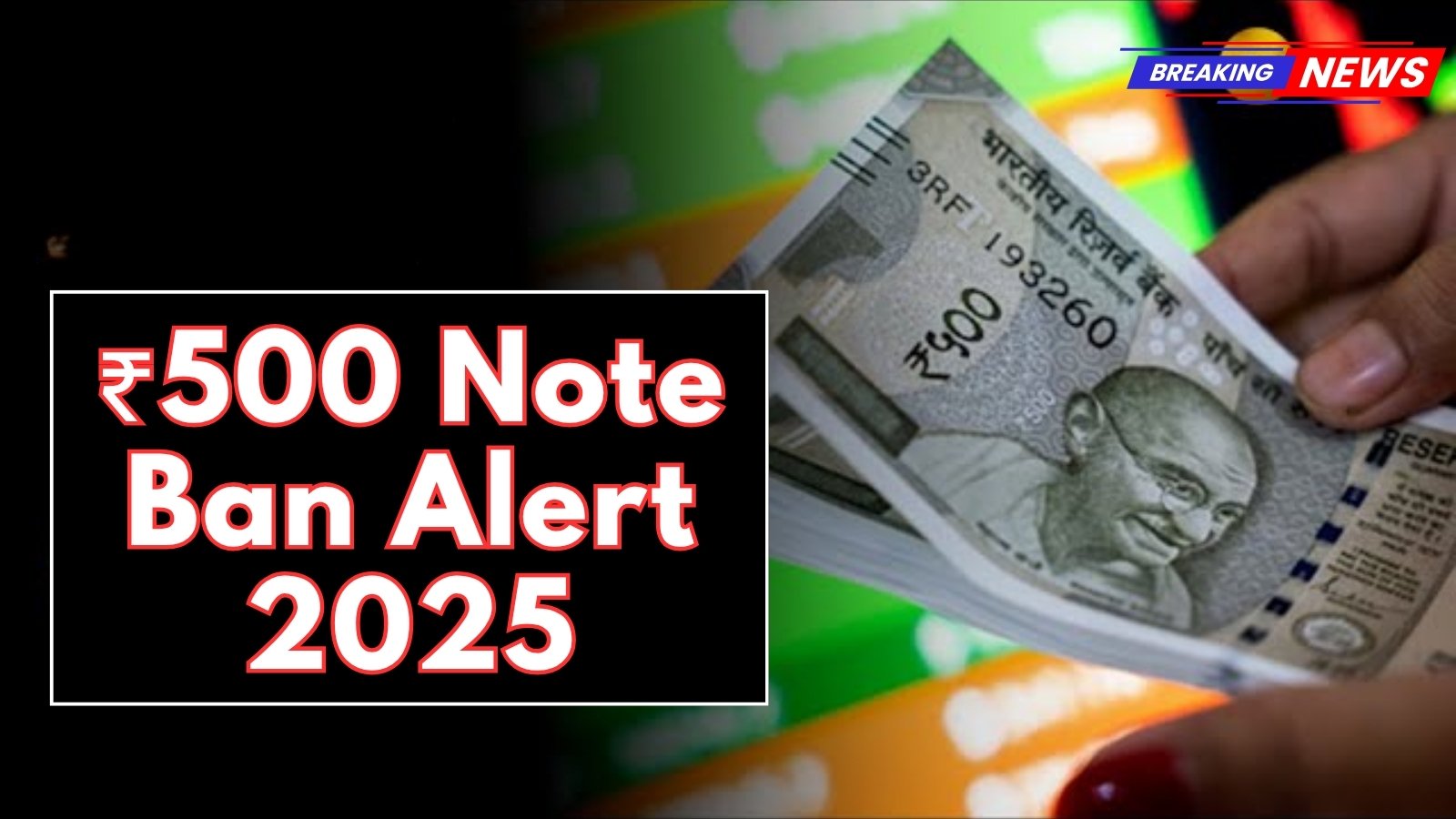₹500 Note Ban Alert- The Reserve Bank of India (RBI) has released a new circular regarding ₹500 denomination notes that significantly impacts specific segments of the population. While not a complete ban, this targeted regulatory measure introduces restrictions on certain ₹500 note series, primarily affecting businesses, cash-intensive sectors, and rural economies. The circular specifies the phased withdrawal of older series notes while maintaining the validity of current circulating notes.
Key Details of the RBI Circular
The circular focuses specifically on the pre-2018 series of ₹500 notes with distinct identification markers. These notes, which lack certain security features present in newer versions, will undergo a structured withdrawal process. The RBI has clearly stated that this is not a demonetization exercise but rather a strategic attempt to strengthen the integrity of India’s currency system against counterfeiting concerns.
Key components of the circular include:
Phased withdrawal of specific pre-2018 ₹500 note series
Introduction of a verification period extending until March 2026
Specified exchange mechanisms through banking channels
Mandatory documentation for exchanges exceeding ₹50,000
The circular emphasizes that current ₹500 notes featuring enhanced security elements remain valid legal tender for all transactions across India. This targeted approach differs significantly from the comprehensive demonetization implemented in 2016.
Impact on Specific Groups
Cash-Intensive Businesses
Retail establishments, wholesale markets, and small businesses that maintain substantial cash reserves face the most immediate impact. These entities must initiate verification processes for their existing cash holdings, potentially causing temporary liquidity challenges and operational disruptions during the transition period.
The RBI has established a specialized business exchange window to facilitate smoother transitions for registered enterprises, though documentation requirements remain strict for larger transaction volumes.
Rural and Agricultural Sectors
Rural economies, particularly in agricultural regions where cash transactions predominate, will experience notable effects. Farmers, seasonal laborers, and rural enterprises often maintain cash reserves through harvest cycles and may face challenges in accessing banking facilities for exchanges.
To address these concerns, the circular outlines provisions for mobile banking units to service remote areas, though implementation timelines suggest potential gaps in coverage during initial phases.
Elderly and Pension Recipients
Senior citizens dependent on pension distributions and those with limited banking access represent another significantly affected demographic. The RBI circular acknowledges these vulnerabilities by introducing extended exchange periods specifically for individuals above 70 years of age, though concerns remain regarding awareness and accessibility.
Exchange Mechanism and Timeline
The RBI has established a structured timeline for the process:
- November 2025: Initial notification period with unrestricted exchanges
- December 2025 – February 2026: Standard exchange through banking channels with prescribed documentation
- March 2026: Final deadline for exchanges at designated RBI offices only
Each bank branch will implement verification systems requiring identification documents for exchanges exceeding ₹10,000, while amounts above ₹50,000 necessitate income source documentation and PAN card details.
Security Features in New Notes
Current ₹500 notes, which remain valid legal tender, contain enhanced security features that distinguish them from the series targeted for withdrawal. These include:
- Improved intaglio printing for the Mahatma Gandhi portrait
- Color-shifting security thread with microprinting
- Enhanced watermark visibility
- Constellation pattern visible under ultraviolet light
- Angular security markings on edges
The RBI emphasizes that familiarization with these security elements helps citizens differentiate between valid notes and those designated for exchange.
Banking Sector Preparations
Financial institutions have begun implementing systems to manage the anticipated exchange volume. Banks report establishing:
- Dedicated counters for note verification and exchange
- Extended working hours during peak exchange periods
- Digital verification systems for larger transactions
- Training programs for staff on authentication procedures
These preparatory measures aim to minimize disruption to regular banking operations while accommodating the specialized requirements of the exchange program.
Official Recommendations for Citizens
The RBI circular provides specific guidance for various stakeholders:
- Verify ₹500 notes in personal possession against published identification markers
- Utilize digital payment mechanisms where feasible to reduce cash dependency
- Maintain documentation for significant cash transactions during the transition period
- Access authorized banking channels early to avoid deadline congestion
- Report suspicious notes through established verification channels
These recommendations emphasize proactive engagement while underscoring that current series ₹500 notes remain fully valid for all transactions.
Conclusion
While not constituting a comprehensive demonetization, the targeted withdrawal of specific ₹500 note series introduces significant considerations for affected groups. The circular represents a measured approach to currency management while maintaining broader monetary stability. Citizens should verify official communications directly through RBI channels and maintain awareness of exchange timelines to ensure compliance and minimize potential disruptions.
